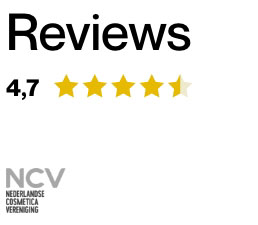The Cosmetics Regulation provides clear legislation and regulations regarding labelling, whereby the following main points must be taken into account. Article 19 of the Cosmetics Regulation describes what the law must contain on the label of a cosmetic product:
- Name and address of manufacturer/importer:
The name and address of the person responsible for marketing the product. There are often multiple addresses on the label, so the address where the product information file is located must be emphasized by, for example, underlining the address. This is informative for the Dutch Food and Consumer Product Safety Authority. - Quantity:
The nominal contents at the time of packaging are indicated in weight or volume. - Shelf life:
Two different systems have been included in the Cosmetics Regulation for indicating the shelf life. Which system should be used depends on the shelf life after production. If products have a shelf life of thirty months or more unopened, the period of use must be stated. The symbol with the opened jar is used for this. If the product has a shelf life of less than thirty months from production, the shelf life date must be stated preceded by the words ‘preferably used before the end…’ or the hourglass symbol. In some cases, where the concept of shelf life after opening is not relevant, the expiration date does not need to be stated. - Special precautions regarding use:
Instructions for use on how best to apply the product. At least the warnings and special precautions indicated in Annexes III to VI of the Cosmetics Regulation must be mentioned. - Batch or code number:
This is a unique number of a product. If there is ever any doubt about the quality of a product, it can be checked whether this applies to the entire batch. - Product function:
Description of the product, for example bath foam, lip balm, after sun or shaving foam. The function of the cosmetic product must be stated on the packaging, unless this is clearly apparent from the packaging or product name. - Ingredient declaration:
All ingredients used in production must be listed on the packaging. In order to be able to state the ingredients in a uniform manner on cosmetics, standardized names are used for the ingredients, so-called INCI names. INCI stands for International Nomenclature Cosmetic Ingredients. Read all INCI nameson the European Union website.
The ingredients are listed in order of decreasing weight. Ingredients that are less than 1% present in the product may be listed in any order at the end of the ingredient statement.
Nanomaterials are used in some products. The name of such ingredients is followed by the word ‘nano’ in brackets. - Symbols
- Shelf life
Most cosmetic products are long, but not
unlimited shelf life. To the user of cosmetics
to inform you about this, there is a shelf life symbol
or date printed on the product. The expiration symbol represents an opened jar. The symbol
indicates: the period after opening during which the product is in
optimal quality can be used. This period
is indicated by the number of months (M). The number
with the month indication can be in the jar or next to it
pot is placed. The symbol appears on cosmetic products that remain unopened for more than 30 months
be sustainable. On products that are unopened for less than
have a shelf life of 30 months, it is indicated ‘preferably
to be used for…’ or the hourglass symbol. If there
If nothing is stated on a product, the product is unlimited
shelf life. - Quantity
The quantity of the product is indicated in
milliliters (ml) or grams (g). The ‘e’ next to the size indicates
that this is the amount that is legal
certain deviation is filled. Products without ‘e’
must contain at least the stated quantity


